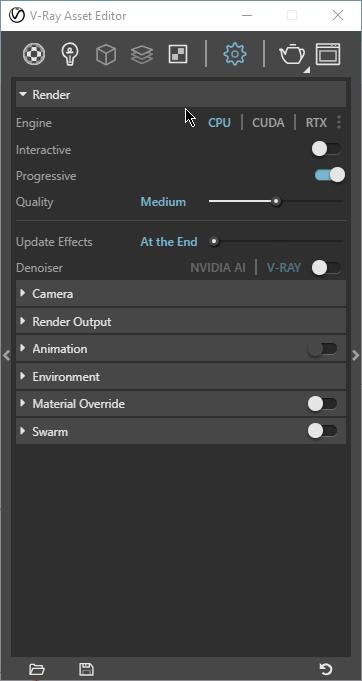

Generally, the Quality presets will work for a wide variety of scenes and you do not need to adjust the settings any further. Changing the Quality preset from the Render rollout sets a number of options with appropriate values for the selected preset. The exposed controls vary depending on the combination of selections between CPU/GPU, Interactive/ Production, and Progressive/Bucket options.

Note that the displayed options in the Advanced settings rollouts change in accordance with the settings from the Default panel. The default options usually work for different scenes, but if access to more advanced options is needed, the right-hand side panel of the Asset Editor provides those. V-Ray Settings are organized in two panels - the main one exposes the default options for a scene setup. These options include the size of the final render, the quality of the shadows, the quality of the reflections, and the quality of the refractions. They can be accessed from the Asset Editor in the Settings tab. The Render page in Document Properties manages the current model’s Rhino Render settings.

Finally, click the Render button to start the rendering process. Next, select the type of renderer you want to use from the drop-down menu. V-Ray Settings provide control over the parameters that adjust the rendering process. In order to render in Rhino, first open the Render dialog by going to the Tools menu and selecting Render. EDIT: Upon close inspection, your image viewer looks like it's. If you're getting better quality by turning the resolution up, then there's going to eventually be some threshold where your project fits your resolution requirements. This page introduces the render settings in V-Ray for Rhino. My first inclination would be to double the output resolution (7200 x 4050) and compare that image to this one.


 0 kommentar(er)
0 kommentar(er)
